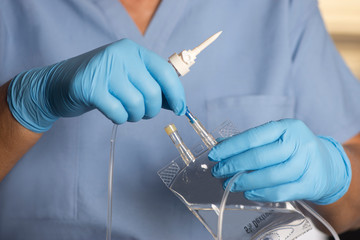
Understanding the Role of Unlicensed Assistive Personnel in IV Therapy
In today's healthcare settings, Unlicensed Assistive Personnel (UAPs) such as Medical Assistants, Phlebotomists, and Certified Nursing Assistants (CNAs) are a vital part of the patient care team. Their duties often include supporting licensed nurses and physicians in delivering quality care. However, the role these professionals can play in intravenous (IV) therapy is a topic of ongoing discussion—and one that must be guided by state-specific laws and regulations.
Who Are UAPs and What Do They Do?
UAPs work under the supervision of licensed professionals and assist with a variety of tasks that do not require a nursing license. This might include taking vital signs, drawing blood, collecting specimens, assisting with activities of daily living, and providing basic patient comfort measures. Because of their hands-on involvement in patient care, many healthcare facilities are exploring how UAPs might assist with IV therapy procedures, especially in high-demand settings.
Can UAPs Start or Maintain IV Therapy?
The answer depends entirely on your state's laws and scope of practice regulations. While some states permit UAPs to engage in limited aspects of IV therapy under strict supervision and with proper training, others clearly prohibit it.
For instance:
- California, Connecticut, South Dakota, and New York are among the states that do not allow UAPs to initiate or manage IV therapy.
- In other states, UAPs may be permitted to perform certain IV-related tasks, such as monitoring IV flow rates or discontinuing IVs, if they have received specialized training and are working under the direct supervision of a licensed nurse or physician.
Due to these significant variations, it is critical that every healthcare provider, educator, and UAP consult their state’s nursing board or regulatory authority to determine what is legally permissible in their specific setting.
The Need for Appropriate Education
Even in states where UAPs are allowed to participate in IV therapy, education is essential. Proper training ensures that tasks are performed safely and in accordance with professional standards. This is especially important when dealing with intravenous medications and fluids, as errors can lead to serious complications.
At Pedagogy Education, we offer a specialized online course designed specifically for UAPs seeking education in IV therapy. Our course, IV Education for Unlicensed Assistive Personnel, covers essential topics including infection control, venipuncture techniques, legal considerations, and proper documentation. While completion of the course does not guarantee that a UAP can legally initiate IV therapy, it provides a strong foundation of knowledge and demonstrates a commitment to safe patient care.
Explore the course here: IV Education for Unlicensed Assistive Personnel
Final Thoughts
The healthcare workforce relies heavily on the support of UAPs. As demand for healthcare services increases, so does the need to clearly define the roles of each member of the care team. IV therapy is a complex and regulated procedure that should only be delegated in accordance with state law, proper supervision, and comprehensive training. If you are a UAP, or if you work with or supervise UAPs, take the time to verify what is allowed in your state and ensure that anyone involved in IV therapy is properly educated and competent.
References
- National Council of State Boards of Nursing (NCSBN). Scope of Practice Decision-Making Framework.
- California Board of Vocational Nursing and Psychiatric Technicians.
- Connecticut Department of Public Health – Scope of Practice Determinations.
- South Dakota Board of Nursing.
- New York State Education Department – Office of the Professions.
- Pedagogy Continuing Nurse Education. IV Education for Unlicensed Assistive Personnel. https://pedagogyeducation.com/Courses/IV-Education-for-Unlicensed-Assistive-Personnel;-M

